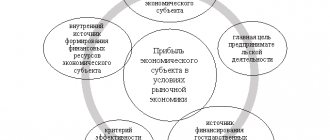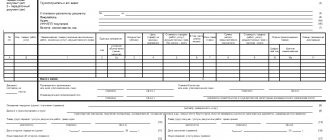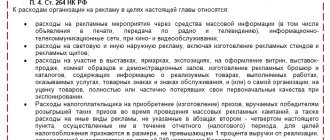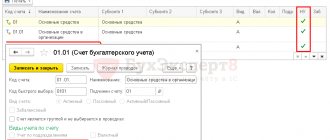For tax and accounting, one of the methods used is the accrual method, which is used by the majority of organizations (individual entrepreneurs use the cash method). The accrual method plays an important role in the correct calculation of income tax and consists in recognizing income and expenses when the results of business transactions are recognized upon actual completion and do not depend on the time of receipt and cash flow associated with the receipts. There are advantages and disadvantages to this method when applied, but it is believed to accurately reflect the organization's performance.
Let's look at accounting using the accrual method.
What is the accrual method?
This method involves the recognition of income or expenses at the time of the actual implementation of the company's actions to sell goods (for example, shipment from a warehouse) or produce them (for example, payroll to employees or receipt of components from a supplier), provided that this recognition will have a legal basis. That is, for example, based on a purchase and sale agreement and other contracts.
The receipt of funds into the account or cash register of the enterprise (in the case of the sale of goods and thus determining income) or their expenditure (in the case of determining the costs associated with the production of products) does not matter under the accrual method. The main thing is that the company has a legal basis for recognizing income and expenses, as well as the company’s performance of actual actions, the result of which will necessarily be the appearance of revenue or costs in the future.
Some aspects of the application of the considered methods for recognizing income and expenses are regulated by the Russian Tax Code. As for the accrual method, Article 272 of the Tax Code of the Russian Federation is devoted to it. Let us study its most remarkable provisions in more detail.
Article 272 of the Tax Code of the Russian Federation states, in particular, that expenses using the accrual method within the reporting period are recognized as those actually incurred during the reporting period, regardless of the moment of making the necessary payments for them. In addition, as stated in the provisions of Article 272 of the Tax Code of the Russian Federation, recognition of expenses using the accrual method can be carried out based on the conditions defined in certain contracts.
In particular, with regard to specific material expenses, their implementation is recorded at the moment:
- transfer of raw materials to factory lines;
- the company signing a document confirming the acceptance or transfer of work or services related to the release of goods.
Thus, the main criterion for applying the considered method of recognizing income or expenses is their “calculability,” the presence of legal grounds and actual events that imply financial settlements in the near future by the enterprise or its partners that are associated with the acquisition of revenue or, conversely, the emergence of costs.
Eliminating the “fiscal illusion”
Experts interviewed by the authors of the report gave several examples where, thanks to the accrual method, fiscal illusions are eliminated, that is, techniques used in government reporting that only create the illusion of changes when there are no changes in essence. The accrual basis provides a stronger foundation for a fiscal system in which goal-setting means recognizing the true impact of decisions on the balance sheet. In the absence of such a system, there will always be a very strong temptation to remove real costs from view, even if this does not contribute to value creation.
The key criterion for the development of fiscal rules by the state is the net value of a public good - the cost of produced public goods minus the costs of their creation. In this case, we are talking about a new system of national reporting, which gives a more holistic picture of the financial position of the state. Guaranteeing a truly complete reflection of information about all resources and risks in the public sector is possible only under the condition of complete consolidation, the perimeter of which should include organizations under government control, also in the case of those included in the national reporting system.
Accrual principles
The accrual principle (method) is that all income and expenses received or incurred in the reporting period are considered income and expenses of the reporting period, regardless of the actual time of receipt or payment of funds.
Income and expenses not related to the reporting period are not recognized as income and expenses of this period, even if money for them was received or transferred in this period. The accrual method of accounting for income and expenses allows “to reflect the financial consequences for the company of emerging facts of economic life in those periods when these facts occurred, and not when the company receives or pays money.
The method includes two steps:
- 1) statement - recognition of income at the time of their receipt and expenses at the time of their occurrence;
- 2) transformation of accounts.
Deferral - expenses or income of future periods. It is necessary: in case of costs that can be attributed to two or more reporting periods.
For example, the cost of the building, auxiliary materials, insurance paid in advance.
The transformation affects asset accounts (credited) and expense accounts (debited); in case of income that must be attributed to two or more reporting periods.
For example, receiving an advance commission for services that will be provided subsequently. The transformation affects the liability account (debited) and the income account (credited).
Accrual is a statement of expenses or income that no longer occurs, but has not yet been registered and posted to the cash register.
Accrual required:
in case of income due, but not recorded and not received. For example, commissions earned but not yet received and not yet invoiced to clients. The transformation affects the asset account (debited) and the income account (credited);
in case of incurred, but unregistered and not incurred expenses. For example, employee wages for the current reporting period, but paid in the next reporting period. The transformation affects the expense account (debited) and the liability account (credited).
Firms often incur costs that have a beneficial effect on financial results in more than one reporting period. These costs are usually charged entirely to asset accounts. At the end of a given accounting period, amounts relating to that period are usually transferred from asset accounts to expense accounts.
The two most important types of expense deferrals include entries for advances (advances paid) expenses and depreciation of buildings, structures, and equipment.
Advance expenses are paid in advance and relate to the future. These include rent, insurance payments, and the purchase of supplies.
That part of the expenses that went to carry out current operations of a given period is considered as expenses of this period, and that part that has not yet found its application in this reporting period is considered as expenses of future periods.
If at the end of the month no corrective entries are made to allocate advance expenses, then both the balance sheet and the profit and loss account are considered to be compiled incorrectly. In this case, assets will be overvalued and expenses will be undervalued. The consequence of this will be an overstatement of capital on the balance sheet and net profit on the income statement.
Practical implementation of the accrual method implementation project
All experts interviewed for the study agree that the introduction of accrual accounting in the public sector is a long-term project that requires clarity on the direction of movement. At the same time, there are no two identical countries that set out on this journey, having completely the same motivation, resources and capabilities, therefore, each state can have its own intermediate goals within the framework of the implementation of this project, and the government must have complete clarity regarding them.
Another important fact is that the accrual accounting project itself cannot be viewed in isolation, but must be done with consideration of the broader benefits and intervention (if necessary) to ensure its successful completion. For example, the experts interviewed often mentioned the occasional need to postpone or even skip certain components of the implementation process if there are sensitive political issues involved, or there are simply purely technical problems that need to be resolved first. On the one hand, this is even better, since it allows you to draw up a multi-stage, well-thought-out implementation plan. On the other hand, this would not become an excuse for completely ignoring the truly complex, but at the same time important components of the implementation process. The roadmap developed may look ambitious, but it better also be realistic in the long term. In general, the plan for implementing the accrual method itself may go through more than one iteration and requires constant refinement.
Advantages of the Accrual Method of Accounting
The remaining 12,240 rubles. will be recognized as expenses in December.
According to the principles of the accrual method described in IFRS (in particular, IAS 19 “Employee Benefits”), the bank’s expenses for the payment of vacation pay will be recognized as the employee “earns” the right to vacation, that is, monthly, simultaneously with the accrual of the employee’s salary. Therefore, by November, when the employee goes on vacation, the expenses will already be recognized in previous periods, in the periods when economic benefits were received from them.
Similar distortions will occur when taking into account other expenses associated with supporting the activities of a credit institution.
Thus, the Draft requires taxes and fees to be reflected no later than the deadlines established for their payment. In practice, these dates fall within other reporting periods. In IFRS, taxes must be calculated on the last day of the tax period.
Travel and entertainment expenses, according to the Project, are reflected on the date of approval of the advance report. In IFRS, transactions are reflected at the time they are completed, and not documented, so these expenses will be recognized at the time of their actual implementation, regardless of the date of approval of the expense report.
With regard to the requirements for recognition of depreciation on the last day of the period and legal costs at the date of award, in the Project they correspond to the accrual method under IFRS.
Thus, it is obvious that the accrual method proposed in the Project only formally corresponds to the accrual principle in the Western sense. In practice, the use of such a “Russified” method will certainly lead to distortion of reporting indicators prepared in accordance with IFRS.
At the same time, direct copying of the IFRS accrual method is not possible today due to a number of objective reasons: the construction of Russian accounting on the basis of primary documentation (often the date of preparation of the document and the date of the transaction refer to different periods), the requirements of other branches of legislation (for example , the Labor Code of the Russian Federation, which establishes the procedure for calculating and accruing vacation pay and compensation), the lack of a concept of professional judgment of an accountant and the legal force of this judgment, etc.
At the same time, for example, there are no barriers to calculating taxes on the last day of the period, that is, as prescribed by IFRS.
International Financial Reporting Standards are a system of standards that provide a comprehensive understanding of business and a reliable reflection of a bank’s activities in financial statements. Distortion of the fundamental assumptions of IFRS will undoubtedly lead to the generation of reporting, the qualitative characteristics of which will not meet the requirements of IFRS.
In order for the principles of IFRS in the Western sense to begin to work effectively in the domestic banking system, it is extremely important to correctly identify their essence in the regulatory documents of the Bank of Russia. S.V.Manko
S.V.Manko
Financial Director
LLC "PROMOTING"
An important difference between Russian accounting standards and IFRS is the approach to reflecting income and expenses in the latter on an accrual basis. This method is basic in International Financial Reporting Standards.
Which method to use: cash or accrual
The same transactions, only the methods of recognizing revenue and expenses differ. This is what happened in the end ↓
As you can see, the method of recognizing revenue and expenses makes a significant difference. Using the accrual method, we made a net profit and ended the month in a good mood. You can even pay yourself dividends.
But on a cash basis we are at a loss. Of course, since May took on all the costs of rent and materials! At the same time, in the next months it seems that we will not be using either the new workshop or the remaining crushed stone.
In our example, the cash method distorted the result for the worse. But it may be the other way around, and this is especially dangerous. Let’s imagine that in June we will receive half a million in advance payments for future orders. Let us remember that we have already paid for the rent and gravel. And we will get some incredible profit - although in fact we are using rent, spending crushed stone, and have not yet fulfilled prepaid orders.
The cash method distorts the real picture of the business. On the other hand, it is simple. There is no real need to keep cash accounting - in most cases, it will be enough to look at May expenses in the Internet bank.
There are situations when the cash method can be used without distorting the financial result of the company:
- If the amounts of inventories and debts are zero at the beginning and end of the period.
- The month of the services you provided coincides with the month of payment. The client placed an order, and 10 minutes later you shipped it. You calculated your salary for May and paid it by May 31st.
- According to the Tax Code: can be used by organizations with average quarterly revenue not exceeding 1 million rubles for 4 consecutive quarters.
But this is all about exceptional companies. In general, we strongly recommend using the accrual method to calculate real net profit, calmly withdraw dividends to yourself without cash gaps, and evaluate the effectiveness of business areas.
Example of income distribution
Alpha and Omega LLC uses the accrual method.
In October 2021 the organization entered into an agreement with Beta LLC, whose services should be provided in March 2021. next year. The cost of the contract is 600,000 rubles. It is not possible to determine intermediate results. Revenue according to the contract is reflected in accounting in full (600,000 rubles) in March upon receipt of the results of the work performed.
In tax accounting, income from obtaining the result of work is reflected in 2 stages:
- in October, November and December 2021
- in January, February and March 2021
The organization chooses the distribution procedure independently. The following options are possible:
- Evenly
The contract period is 6 months and thus, every month 100,000 rubles will be included in income. (RUB 600,000 / 6 months).
- Proportional to the costs according to the estimate
If an estimate is attached to the contract, according to which stages of work are highlighted with expenses at each stage, for example, 50% of the amount is spent in the first month. Accordingly, 50% of the revenue (300,000 rubles) of Alpha and Omega LLC will be taken into account in October.
Thus, the disadvantage will be that part of the proceeds will be reflected in tax accounting earlier than in accounting and, accordingly, it will be necessary to pay income tax on it earlier than the work performed is received, i.e. taxes will be paid before ownership of the work performed under the contract is obtained. Protect yourself from... that the results of the work will not be provided after 6 months can be explained by the fact that the contract specifies the stages of delivery of the work.
Calculation of income tax using the accrual method
Quite often, accounting differs from tax accounting. However, with regard to income tax under the accrual method, these two types of accounting are as close as possible. This happens for the following reasons:
- Firstly, revenue should be taken into account not when it is received, but at the time of shipment of products or provision of services. The corresponding entry in accounting is made based on the dates of the issued documents.
- Secondly, non-operating income (fines, for example) is taken into account on the same principle. For example, fines should be included in income and dated when such a sanction was recognized by the debtor voluntarily or in accordance with a court decision.
Expenses can also be taken into account in the period of their occurrence without taking into account the date of payment.
It is easy to see that in accounting, income tax entries are made according to similar rules.
Every company that does not fall under the definition of a “small enterprise”, receives revenue in excess of one million rubles per quarter and pays income tax, must use the accrual method. It is believed that the use of this method makes it possible to most accurately reflect the existing state of finances and the economic situation of the enterprise.
Small businesses are allowed the cash method even if they use the general tax regime. With this type of accounting, obligations to the budget are formed only when funds are received into the account or cash register of the enterprise. Tax is paid after actual receipt of income.
Example of transactions when using the accrual method
In March 2021, Alpha and Omega LLC shipped a batch of flour worth RUB 590,000 to Beta LLC. (including VAT - 90,000 rubles). Beta LLC transferred funds in April. Alpha and Omega LLC uses the accrual method (according to accounting policy).
The following entries are made in the accounting of Alpha and Omega LLC in March:
D62 K90 subaccount “Revenue” – 590,000 rubles. (proceeds from flour)
D90 sub-account “VAT” K68 sub-account “Calculations for VAT” – 90,000 rubles. (VAT is charged on sales).
And the income tax return for the first quarter of 2021 of Alpha and Omega LLC reflects income from the sale of flour in the amount of 500,000 rubles. (590000 – 90000).
The procedure for recognizing income using the accrual method
There are eight elements included in the accounting method:
1. Documentation –
Each business transaction in accounting is documented with primary documents at the time of its completion or immediately upon completion. Documentation gives accounting information legal force.
2. Inventory -
checking the actual availability of inventory, cash and liabilities of the organization by measuring, weighing or direct recalculation for subsequent comparison with accounting data.
3. Grade -
all property and obligations of the organization are subject to mandatory monetary expression in a single measure (Russian rubles), which allows them to be summed up and compared.
4. Costing –
calculation in monetary terms of the cost of one unit of production (work, services).
5. Accounting system:
a) accounting accounts;
Accounting –
a method of current reflection, grouping and control of economic assets, sources of their formation and economic operations.
Accounting accounts are divided into 4 orders:
1st order accounts – synthetic –
accounting of funds, property and liabilities is carried out in a general form and only in monetary terms.
2nd order accounts – sub-accounts –
are intermediate, detail the information of synthetic accounts also in a generalized form and in monetary terms, and combine a group of analytical accounts.
3rd order accounts – analytical –
reflect the data of synthetic accounts in a more detailed form, both in monetary and in kind terms.
4th order accounts – off-balance sheet –
take into account funds and property that do not belong to the enterprise as a property.
Synthetic accounts are combined into the Chart of Accounts and come in three types:
- active –
reflect the state and placement of the organization’s funds and property (assets); - passive –
reflect the sources of formation of funds and property (liabilities); - active-passive -
reflect both funds and property, and the sources of their formation.
b) chart of accounts.
6. Double entry –
Each business transaction in accounting is recorded twice - as a debit to one account and a credit to another account in the same amount.
7. Balance sheet (balance sheet summary) –
a two-sided table, where the funds and property of the enterprise are located on the left side (assets), and the sources of their formation on the right side (liabilities).
Between the left and right sides of the balance sheet, equality of totals must be maintained, which is called balance sheet currency .
8. Accounting statements –
a system of indicators characterizing the financial condition of an enterprise for a certain period of time (reporting period) and the results of its activities as of a certain reporting date on an accrual basis from the beginning of the year (quarter, half-year, 9 months, year).
Accrual method and cash method
The accounting method under consideration includes the calculation of both direct and indirect costs.
Double entry
allows you to reflect a balance sheet summary of indicators. The essence of this method used in accounting is to duplicate the same indicator for the debit of one account and the credit of another.
Balance sheet
– a method of accounting at an enterprise that allows you to summarize the available information about the state of property and sources of funds in monetary terms for a specific date in the form of a two-sided table. Balance reflects the equality of these parties.
Financial statements
consists of many forms that characterize the economic activities of an enterprise. The results of this accounting method are used both internally and externally.
Above are the characteristics of the main accounting methods, the maintenance of which is necessary for any enterprise. Each of these elements functions in direct relationship with the others. Accounting is carried out for all indicators. There is even a depreciation method in accounting that allows you to calculate the depreciation of existing equipment and other subject property.
Thus, the accounting method is the organization of interconnected interaction of all elements of accounting, the maintenance of which ensures a complete, objective and continuous reflection of all economic activities of the enterprise. offers to organize accounting in your organization at a highly professional level. Trust our specialists to avoid mistakes and unnecessary financial losses.
Return to Publications section
We form the balance using the accrual method
Let's turn to the list of accounting objects. This:
- assets, liabilities and capital (balance sheet elements);
- income and expenses (elements of the income statement).
It is advisable to combine accounting and tax accounting registers. Firstly, records in them are kept on the basis of the same primary documents. And secondly, the data in the statement of financial results and the tax book of income and expenses may differ very slightly. The complex register would look like this:
Did you like the cash method? Then let's get to work! It is customary to review accounting policies from the beginning of the year.
Webinars for accountants at Kontur.School: changes in legislation, features of accounting and tax accounting, reporting, salaries and personnel, cash transactions.
For tax and accounting, one of the methods used is the accrual method, which is used by the majority of organizations (individual entrepreneurs use the cash method). The accrual method plays an important role in the correct calculation of income tax and consists in recognizing income and expenses when the results of business transactions are recognized upon actual completion and do not depend on the time of receipt and cash flow associated with the receipts. There are advantages and disadvantages to this method when applied, but it is believed to accurately reflect the organization's performance.
Let's look at accounting using the accrual method.
Reason for using the accrual method
The basis of the accrual method is that the accounting of income and expenses does not depend on the actual flow of funds. That is, the date of receipt of income is the date of transfer of ownership rights to goods (work, services). Thus, revenue from core activities is taken into account at the time of shipment of goods, regardless of whether payment has been received from the buyer. Similarly, for non-operating income, profit accounting does not depend on the fact of payment.
Important! In relation to expenses and for main non-core activities using the accrual method, accounting is carried out in the period in which they are documented and also do not depend on the fact of payment.
Comparison
The main difference between the accrual method and the cash method is that with the first, income and expenses are recognized at the moment the grounds for settlements between counterparties actually arise (for example, after delivery or, conversely, receipt of goods). While in the second case, revenue and costs are recognized upon receipt of funds in the cash register or bank account of the company or their debit, even if the company (or its counterparty) has not yet actually received or delivered the goods.
Of course, financial settlements and the corresponding legal actions of the company - the supply or purchase of goods, works, services - can be carried out in one reporting period, or even simultaneously. In this case, experts recommend that companies recognize income and expenses and reflect them in accounting using the accrual method - since there are no restrictions for its use in the Tax Code of the Russian Federation.
Having considered the difference between the accrual method and the cash method, we will reflect the main conclusions in the table.
Asset and liability management
Let's look at this in more detail. In general (and ideally), assets in the public sector serve the purpose of providing public services, so they must be replaced if damaged. The dilapidated hospital building will (ideally) be restored or replaced with a new one. While the cash method does not provide an incentive to carry out restoration work, the accrual method recognizes the costs associated with the gradual depreciation of assets, and this is what allows you to determine which assets currently require improvement. If an asset can no longer be restored due to the end of its useful life, it is the accrual method that reveals the need to allocate budget resources to replace this asset. Hence the conclusion: the accrual method ultimately improves asset management, and therefore the quality of government services.
At the same time, this method improves the quality of liability management, helping the government make decisions that do not burden future generations with a heavy financial burden. Moreover, the accrual basis also provides additional information about contingent liabilities, which helps to better identify fiscal risks. According to statistics from the International Monetary Fund, contingent liabilities constitute a very significant part of the balance sheet of government organizations. As an example, between 1990 and 2014 the IMF recorded 230 occurrences of contingent liabilities in action, with average costs incurred amounting to approximately 6.1% of each country's GDP.
Accounting for income using the cash method
If a business entity has chosen this method of reflecting its own revenue in the financial results, then it is obliged to reflect this in the current accounting policy of the enterprise and follow it in the future. The cash method of recognizing income and expenses in the income portion has a number of features enshrined in current legislation, therefore their compliance is mandatory for any forms of business that are allowed to use this accounting option according to the Tax Code of the Russian Federation:
- the date of recognition of receipt is considered to be the day on which funds were credited to the business entity’s current account in the bank;
- the condition above also applies to any work and services for the benefit of the business that are considered non-property;
- if the company provided loans to anyone, then on the day of their repayment the income is also reflected in full.
In other words, the cash method can be based on actual transactions. Otherwise, revenues in favor of the business entity are not recognized.
Conditions for applying the cash method.
To begin with, let's name those organizations that do not have the right to use the cash method by virtue of paragraph 1, 4 of Art. 273 Tax Code of the Russian Federation. This:
- banks, consumer credit cooperatives and microfinance organizations;
- organizations recognized as controlling persons of controlled foreign companies;
- organizations specified in paragraph 1 of Art. 275.2 of the Tax Code of the Russian Federation (carrying out activities related to the production of hydrocarbons in a new offshore hydrocarbon field);
- participants in property trust management agreements, simple partnerships or investment partnerships.
Other organizations have the right to apply the cash method of income tax if, on average, over the previous four quarters, the amount of their revenue from the sale of goods (work, services) excluding VAT did not exceed one million rubles for each quarter.
In this case, revenue from the sale of goods (work, services) for the purposes of calculating corporate income tax is determined in accordance with Art. 249 of the Tax Code of the Russian Federation (see Letter of the Ministry of Finance of Russia dated December 16, 2016 No. 03-03-06/1/75488). That is, the calculation of revenue includes all receipts for sold goods, works, services, property rights in cash and (or) in kind without VAT and excise taxes; non-operating income is not included in the calculation.
Please note that compliance with the revenue limit must be verified at the end of each quarter.
Example 1
We will show the calculation of the amount of revenue (excluding VAT) on average for the previous four quarters (the original data is given in the first row of the table).
(million rubles)
| Calculation date | 2017 | 2018 | |||||
| I quarter | II quarter | III quarter | IV quarter | I quarter | II quarter | III quarter | |
| – | 0,7 | 0,5 | 0,9 | 1,8 | 0,6 | 0,65 | 0,98 |
| 01.01.2018 | (0,7 + 0,5 + 0,9 + 1,8) / 4 = 0,975 | ||||||
| 01.04.2018 | (0,5 + 0,9 + 1,8 + 0,6) / 4 = 0,95 | ||||||
| 01.07.2018 | (0,9 + 1,8 + 0,6 + 0,65) / 4 = 0,9875 | ||||||
| 01.10.2018 | (1,8 + 0,6 + 0,65 + 0,98) / 4 = 1,005 | ||||||
From the table above it is clear that the organization had the right to apply the cash method of income tax from 01/01/2018, since over the previous four quarters its revenue averaged 0.975 million rubles.
This right was retained in the second and third quarters. After the third quarter ended, it turned out that revenue for the previous four quarters (IV quarter of 2021 and I, II, III quarters of 2021) exceeded the established limit, so in October 2021 the organization loses the right to use the cash method.
In paragraph 4 of Art. 273 of the Tax Code of the Russian Federation stipulates that if a taxpayer who has switched to determining income and expenses using the cash method, during the tax period exceeded the maximum amount of revenue from the sale of goods (work, services) established by clause 1 of this article, then he is obliged to switch to determining income and expenses on an accrual basis from the beginning of the tax period during which such excess was made.
To switch to the accrual method from the cash method (if you lose the right to use the latter), you must perform the following actions:
- recalculate income and expenses from January 1 using the accrual method rules;
- recalculate the amounts of advance payments for income tax from the beginning of the year;
- submit an updated income tax return.
Advantages of the Accrual Method of Accounting
The accrual method of accounting is used by most organizations. The material provides the main characteristics of the accrual method in accounting, as well as formulates the conditions under which it is mandatory.
Accrual method: main characteristics and advantages
Calculation of income tax using the accrual method
Selection of a method and its consolidation in accounting policies for accounting and tax purposes
Accrual method: main characteristics and advantages
The legislation of the Russian Federation establishes 2 possible ways of recognizing income and expenses - the accrual method and the cash method.
Under the cash method, expenditure and income transactions are considered completed at the time of payment or at the time of receipt of funds.
The accrual method is based on the principle that it is necessary to recognize income and expenses when a transaction is carried out that has documentary confirmation. There is no dependence on the inflow or outflow of money.
The accrual method should be used by organizations by default and only if certain conditions are met are they allowed to use the cash method. In practice, such conditions can only be met by a small enterprise with low turnover. They take into account income when the money arrives at the cash register or in the current account, and expenses - when the funds are actually spent.
Using the accrual method makes accounting more efficient. A specialist from accounting registers generated using the accrual method will receive more accurate information about the state of affairs at the moment. This method is also closer to international standards.
The cash method suffers from some reporting distortions due to the fact that individual events of economic life according to documents are difficult to link to specific dates.
Calculation of income tax using the accrual method
Quite often, accounting differs from tax accounting. However, with regard to income tax under the accrual method, these two types of accounting are as close as possible. This happens for the following reasons:
- Firstly, revenue should be taken into account not when it is received, but at the time of shipment of products or provision of services. The corresponding entry in accounting is made based on the dates of the issued documents.
- Secondly, non-operating income (fines, for example) is taken into account on the same principle. For example, fines should be included in income and dated when such a sanction was recognized by the debtor voluntarily or in accordance with a court decision.
Expenses can also be taken into account in the period of their occurrence without taking into account the date of payment.
It is easy to see that in accounting, income tax entries are made according to similar rules.
Small businesses are allowed the cash method even if they use the general tax regime. With this type of accounting, obligations to the budget are formed only when funds are received into the account or cash register of the enterprise. Tax is paid after actual receipt of income.
Selection of a method and its consolidation in accounting policies for accounting and tax purposes
Please note that small businesses may choose between the income and expense recognition methods described above. Other subjects are not given this choice.
In addition, the responsibility of any enterprise is to consolidate in the accounting policy for the purposes of accounting and tax accounting the chosen (voluntary or forced) method.
Selection of a method and its consolidation in accounting policies for accounting and tax purposes
Please note that small businesses may choose between the income and expense recognition methods described above. Other subjects are not given this choice.
In addition, the responsibility of any enterprise is to consolidate in the accounting policy for the purposes of accounting and tax accounting the chosen (voluntary or forced) method.
Similar articles
- Differences between the accrual method and the cash method
- Depreciation in tax accounting
- Simplified tax system “income minus expenses” - accounting policy
- Calculation of depreciation of fixed assets using the straight-line method
- Recognition of income and expenses under the cash method









